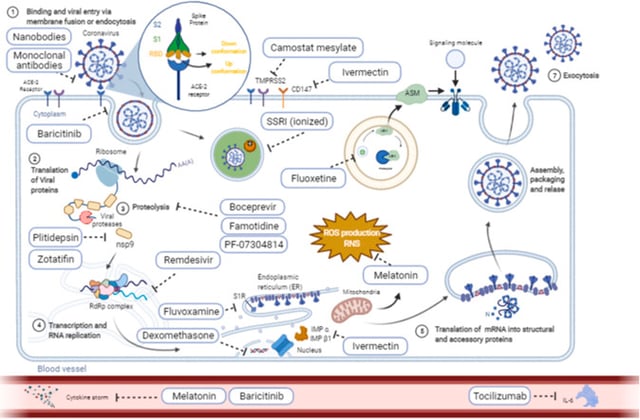Blog

Ivermectin: Neither great nor idiotic – Highlights COVID messaging fails
What is Ivermectin?
Before Ivermectin was used as proof of idiocy or as an excuse not to vaccinate, we in pediatric emergency used it often. For pinworms. Or roundworms. It’s even been marketed as a single dose treatment for lice, hooray! But the rapid adoption for uses other than intended – and by this I mean a cultural flag to wave, not medical – reveals three conceptual errors in modern medicine.
The biggest error comes from institutions misrepresenting science.
The biggest error comes from institutions misrepresenting science. The CDC and WHO understandably demand complete certainty of facts before science goes up on their websites.
When there is time to convene expert panels, and when iterative slight changes are made, this is fine. But that’s not science. Science can always change, constantly iterates, and sometimes flips on a dime. (Peanut Bambas snacks for allergy prevention, anyone?)
By only allowing monolithic TRUTH on their websites, these institutions instilled a lack of respect for nuance and nimbleness. In contrast, the NIH has been majestic at synopsizing currently known COVID treatment possibilities. Hopefully, other institutions can learn.
At the onset of SARS-CoV-2, many smart people pointed out that repurposing drugs was way cheaper than making new ones. Hydroxychloroquine made virus-welcoming cell bubbles inhospitable – let’s try that! Fluoxatine used to be used for OCD, but it has antiviral properties – who knew?
The conceptual error wasn’t in trying these drugs, but in their promotion by media and scientists as likely rather than possible. Look, I get it – scientists rarely swoop in for the rescue, and having a set of talents that can be applied to a world-threatening problem is intoxicating. This is why any research worth its salt has to state a hypothesis upfront: you need to know the outcome the researcher is rooting for. But there must be a way to balance iterative information while curbing the media’s unnuanced enthusiasm.
What is the role of media & institutions?
This is a philosophical debate worth having. How can you communicate to the lay press a very complicated risk-benefit based on biochemistry and immunology? How can you be transparent with new evolving knowledge, and be believed when some of that is wrong?
Since the media cannot be stopped, in the current system where doctors can write for anything off label, we need a barrier for prescribing repurposed drugs without strong data. Hydroxychloroquine didn’t work because SARS-CoV-2 doesn’t enter through cell bubbles. It is, however, toxic to the heart and much needed by people with lupus who couldn’t get it. Fluvoxamine DID work – but most likely because it jacks up intracellular melatonin, which is antiviral in four or five different ways.
The key here is a deep understanding of risk/benefit. Prescription drugs ARE prescription because they have some risk. I’m not saying to outlaw off-label use: not every true thing I’ve encountered in medicine has a nice tidy p-value with the first study, and when you have 20+ years in practice you notice things that may take a while to nail down.
But how about publishing the names of doctors who start writing for things they’ve never used before? If you’re confident, you’ll do it anyway. If you’re being pressured by patients, your peers seeing you were a doofus can be a powerful deterrent.
So what's going on here?
This brings us to ivermectin. I have spent at least 60 hours since the beginning of Covid watching and thinking about ivermectin.
From a safety side, the human stuff in a dose or two is benign. For efficacy, use by itself seems too minimal to bother with. A recent JAMA article found it shortened symptoms by 2 days but wasn’t statistically significant. Several studies have shown no difference but also may have been underpowered.
The one study where it dramatically reduced oxygen use in hospitalized patients, however, didn’t use it alone. It was given as a cocktail with zinc, vitamin C, and other intracellular boosters.
And this is the biggest conceptual error we have in Western medicine – we are used to testing things in isolation, when they may only work in concert. Likewise, practitioners of medicine in America are trained to look for a single answer, likely from years of multiple-choice tests.

Examples of multiple-answer combinations.
There are a number of Chinese medicine combinations that are widely used and proven effective against SARS in journals – but only used together. I haven’t kept up with the Chinese medicine solutions for Covid but I do think it given the complicated nature of cellular biology that multiple interventions may have synergy. Melatonin-zinc-ivermectin-vitamin C in concert may have a very different effect than any one alone.
Personally, I think Ivermectin may be useful in conjunction with zinc etc. While it hasn’t been as impactful as I’d hoped, I would neither turn it down if hospitalized nor write a script for myself. Unlike hydroxychloroqine which undeniably DID cause harm, ivermectin in the appropriate small brief doses has better safety and logic. At least it’s not misappropriating drugs that other patients need. Unless you count giving it to kids for worms or lice…